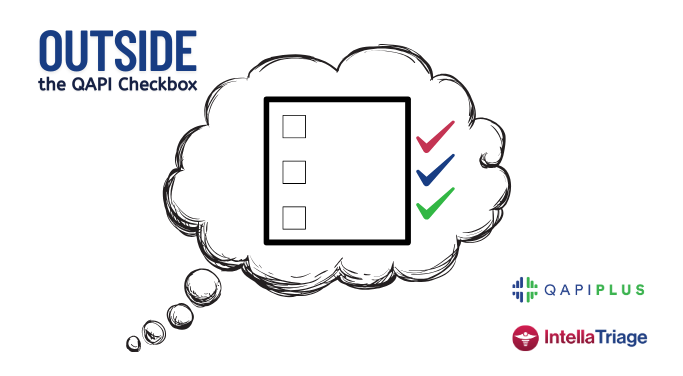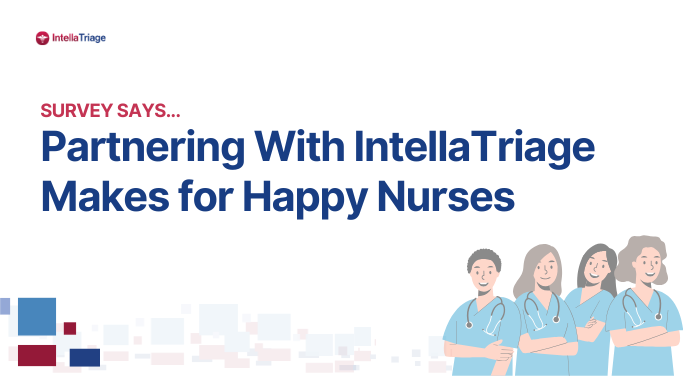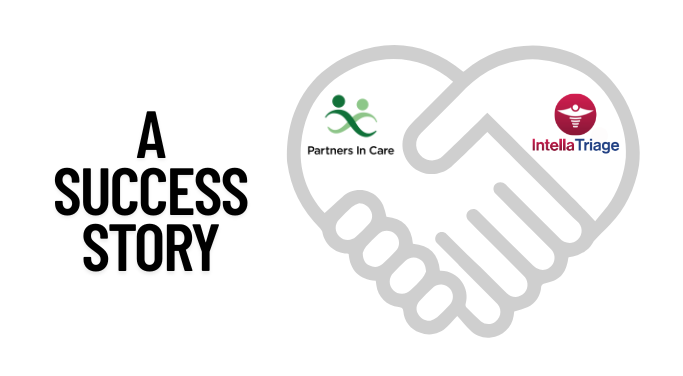Patient experience is a leading indicator of clinical outcomes. Full stop.
Hospice and home health providers, especially quality leaders at those organizations, often find themselves caught in the traditional check-a-box QAPI cycle: identify a quality issue, create a corrective plan, and check a box. However, reframing QAPI as an opportunity for proactive improvement (not just because CMS says you “have to” but because it truly enhances clinician and patient experience) creates far more meaningful results.
At IntellaTriage, we’re focused on delivering a high-quality patient experience after hours and continuously look for ways to align communication and processes ever more closely with clinicians’ day-to-day workflows. Better communication means better care. Much of the data we collect through our nurse-first triage solution informs and supports our provider partners’ QAPI processes. We are proud of that process and are always looking for our own ways to improve.
On that topic, we have been exploring how QAPI strategies improve patient satisfaction and outcomes. We’d like to share this recent conversation with our friends at QAPIplus:
Outside the QAPI Checkbox
“QAPI shouldn’t be a compliance checkbox. It should be a living, data-driven process that empowers teams to improve care every day. When you tie QAPI to patient voice and transparent data sharing, you don’t just meet standards; you elevate care.”
[IntellaTriage] How do you define the relationship between patient experience and patient outcomes in your work with providers?
[QAPIplus] Patient experience and outcomes are deeply connected. A poor experience often signals breakdowns in care that, if left unaddressed, can lead to worse clinical outcomes. That’s why we’ve focused on using tools to surface those signals early, linking feedback, quality data, and compliance metrics in one place. When frontline teams can act on real-time insights, it improves care delivery, prevents issues before they escalate, and ultimately drives better outcomes.
[IT] Have you seen data or proof that improved admission processes, like expectation-setting and patient education, can measurably improve these areas?
[QP] Yes, agencies implementing standardized admission education protocols will often see fewer early discharges and complaints. We’ve worked with providers who saw a 25% reduction in care plan deviations after integrating digital education tools and expectation-setting scripts at admission. However, the most meaningful difference arises from directly involving the patient in the care planning process.
One key strategy is to incorporate a patient-stated goal into the plan of care from the very beginning. Whether “I want to be strong enough to attend my granddaughter’s graduation” or “I want to manage my blood sugar without feeling dizzy,” these goals provide clinical teams with a personalized anchor to build around and give patients a reason to stay engaged. Admission isn’t just a compliance step; it’s the first opportunity to establish a collaborative, meaningful care partnership.
[IT] What differences do you see in data or outcomes between organizations with effective QAPI processes and those without them?
[QP] Organizations with strong QAPI processes tend to see higher survey readiness, lower hospitalization rates, and more consistent patient satisfaction scores. Their teams also respond more quickly to trends because data is visible and actionable, not just stored in binders or spreadsheets.
What truly sets these agencies apart is that their QAPI programs are wired to prevent, not just correct. They use data trends to identify risks early and focus on preventing poor outcomes and patient safety events before they happen. These agencies know their quality gaps and proactively work to close them, which creates a culture of continuous improvement.
On the other hand, agencies without a robust QAPI program or leadership buy-in to quality are often stuck in a cycle of reacting. They constantly address issues after the fact, responding to low scores, missed metrics, and patient complaints. These organizations tend to view quality as a cost rather than an investment, and ultimately, they pay a higher price through non-compliance citations, regulatory penalties, or compromised patient care.
QAPI and the Patient Experience
[IT] Which patient experience factors, such as communication, timeliness, or education, do you see as having the most substantial impact on clinical outcomes?
[QP] Communication and education have the most substantial impact. Patients who understand their care plan and feel heard are more likely to comply with treatments and report concerns early. Timely care also matters; delays can quickly turn manageable conditions into hospitalizations. Technology can help monitor and flag gaps in these areas before they affect outcomes.
[IT] What’s one area of patient experience that agencies often overlook but could significantly improve outcomes?
[QP] Emotional and psychosocial support is often undervalued. Patients who feel emotionally supported are more likely to trust their care team and engage with care plans. Investing in this area can significantly reduce anxiety and improve quality-of-life outcomes; it’s essential. Agencies that prioritize this area will often see improvements in satisfaction scores and tangible outcomes like reduced symptom burden, fewer crisis calls, and increased alignment with patient goals of care. (We couldn’t agree more!)
That’s why it’s so important to incorporate a patient or family psychosocial support plan directly into the care regimen. Clinicians experience health crises daily, but for patients and their families, this may be the first time they are facing something so life-changing. Emotional support, clear education, and an empathetic presence during this time make a tremendous difference.
In fact, I can confidently say that patients who form emotional connections with their clinicians are far less likely to complain, even when an error occurs, compared to patients who don’t feel seen, heard, or connected. Building trust through psychosocial support isn’t just good care; it’s a good strategy that drives better patient experience and outcomes.
[IT] Is there anything else you’d like to share with home health and hospice providers about strengthening QAPI processes to drive better patient outcomes and satisfaction?
[QP] QAPI shouldn’t be a compliance checkbox. It should be a living, data-driven process that empowers teams to improve care every day. When you tie QAPI to patient voice and transparent data sharing, you don’t just meet standards; you elevate care.
Real-time, focused, and meaningful staff education that connects the dots between day-to-day tasks and patient outcomes fuels the most effective QAPI . You staff will shift from box-checkers to quality champions when you empower them with the knowledge of why something matters and provide tools to act on that knowledge.
Empowerment, education, and ownership move QAPI from a back-office process to a frontline culture. Patient satisfaction and outcomes naturally improve when that happens because quality becomes everyone’s responsibility.
After-Hours Communication
As this conversation illustrates, quality improvement is a continuum that must also exist outside of business hours. For home health and hospice providers, some of the most critical patient interactions happen after hours; when anxiety is high, symptoms worsen, and timely communication can make all the difference.
Nurse-first triage services like IntellaTriage extend your QAPI efforts into the evenings and weekends, providing licensed clinicians who support patients in real time and collect actionable data on call types, symptoms, and outcomes. That data is essential for spotting trends, identifying gaps in education or care planning, and improving processes proactively. When after-hours care is consistent, clinically sound, and well-integrated into your QAPI strategy, the result is a more seamless patient experience and stronger, more reliable outcomes.
Up next: We continue this conversation with a provider who uses their after-hours call data to improve quality and patient satisfaction during the day. Stay tuned!
Special thanks to the team at QAPIplus for sharing their insights and expertise.
About QAPIplus. The QAPIplus quality management solution empowers home health, hospice, behavioral health, home care, long term care and palliative care organizations to achieve their highest performance so you can make a real difference for your patients, payers and care providers. Learn more.
Contact Us for a Consultation
Ready to optimize your triage process? Reach out to us today for a consultation tailored to your needs. Let’s elevate your patient care together.
More From The Blog
Survey Says… Partnering With IntellaTriage Makes for Happy Nurses In today’s competitive healthcare landscape, becoming the employer of choice is a strategic advantage. And if you’re in hospice or home health, your clinicians aren’t just looking for better pay. They’re looking for better balance. According to a recent survey of IntellaTriage clients, 96% say our [...]
Recent data breaches are once again highlighting the urgency of securing protected health information (PHI). In March 2025, Yale New Haven Health System disclosed that an unauthorized third party accessed the personal data of nearly 5.6 million patients. Around the same time, Kentucky’s Cumberland County Hospital suffered a breach affecting more than 36,000 individuals, including [...]
Partners In Care - A Success Story. Partners In Care is a 5-star nonprofit provider of hospice, palliative, and home health services in Oregon. When they decided to reevaluate their after-hours care model, the goal was clear: prioritize patient care while supporting the nurses who make it all possible. Their home health and hospice nurses [...]









